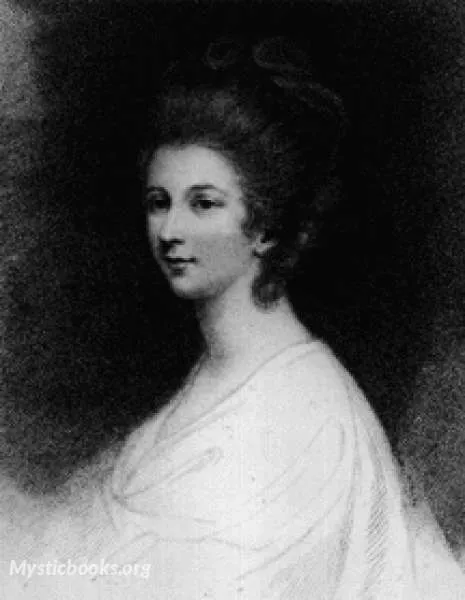
Timeline
Title
Country/Nationality
Charlotte Lennox
Charlotte Lennox, née Ramsay was a Scottish novelist, playwright and poet, mostly remembered today as the author of The Female Quixote, and for her association with Samuel Johnson, Joshua Reynolds and Samuel Richardson. However, she had a long career in her own right.
Charlotte Lennox was born in Gibraltar. Her father, James Ramsay of Dalhousie, was a Scottish captain in the British Army, and her mother Catherine, née Tisdall (died 1765), was Scottish and Irish. She was baptised Barbara Charlotte Ramsay. Very little direct information on her pre-public life is available, and biographers have extrapolated from her first novel such elements as seem semi-autobiographical. Charlotte lived for the first ten years her life in England with her father, who was a lieutenant in the guards, before her family moved to Albany, New York in 1738, where her father was lieutenant-governor. He died in 1742, but she and her mother remained in New York for several further years.
The shock Lennox experienced at life in the colonies probably acted an inspiration in her first and last novels, Harriot Stuart (1750) and Euphemia (1790). At the age of 13, she was sent to be a companion to her maternal aunt Mary Lucking in London, but on her arrival she found that her future guardian appeared to have become "deranged" after the death of her son. As the position was no longer available, Charlotte became instead a companion to Lady Isabella Finch, whose attention had been caught by Lennox's writings.
Lennox's first volume of poetry, Poems on Several Occasions published in 1747, was dedicated to Lady Isabella and centred partly on themes of female friendship and independence. She was preparing herself for a position at court, but this was forestalled by her marriage to Alexander Lennox, and her decision to take up acting (and thereby earn her own income). Her husband's only known employment was in the customs office from 1773 to 1782, and this was reported to be as a benefice of the Duke of Newcastle as a reward for his wife. He also claimed to be the proper heir to the Earl of Lennox in 1768, but the House of Lords rejected his claims on the basis of bastardy, or his "birth misfortunes", as Charlotte tactfully described them.
Beginning in 1746 at age 17, Lennox turned her attention to acting, taking on a public role for the first time after turning away from a life in aristocratic patronage. She performed in a series of "civic" dramas of varying popularity at Drury Lane dealing with social issues of politics and gender. After the publication of her first poems, she began to shift away from acting towards writing, though she appeared in a performance at Richmond in 1748 and received a benefit night at the Haymarket Theatre in a production of The Mourning Bride in 1750. In the latter year, she also published her most successful poem, "The Art of Coquetry" in Gentleman's Magazine. She met Samuel Johnson around that time and he held her in high regard. When her first novel, The Life of Harriot Stuart, Written by Herself, appeared, Johnson threw a lavish party for Lennox, with a laurel wreath and an apple pie that contained bay leaf. Johnson thought her superior to his other female literary friends, Elizabeth Carter, Hannah More, and Frances Burney, due to her efforts to professionalize her writing career, rather than write anonymously. He ensured that Lennox was introduced to important members on the London literary scene.
However, the women of Johnson's circle were not fond of Lennox. Hester Thrale, Elizabeth Carter, and Lady Mary Wortley Montagu, all members of the Bluestocking Society, faulted her either for her housekeeping (which even Lennox joked about), for her ostensibly unpleasant personality, or for her bad temper. They saw her specifically as an incendiary.
Samuel Richardson and Samuel Johnson both reviewed Lennox's second, most successful novel, The Female Quixote, or, The Adventures of Arabella. Henry Fielding praised it in his Covent Garden Journal and it gained some popularity. It was reprinted and packaged in a series of great novels in 1783, 1799, and 1810, and translated into German in 1754, French in 1773 and 1801, and Spanish in 1808. The novel formally inverts Don Quixote: as the Don mistakes himself for the knightly hero of a romance, so Arabella mistakes herself for the maiden love of a romance. While the Don thinks it his duty to praise the platonically pure damsels he meets (such as the farm girl he loves), so Arabella believes it is in her power to kill with a look and that her lovers have a duty to suffer ordeals on her behalf.
The Female Quixote was officially anonymous and technically unrecognised until after Lennox's death. The anonymity was an open secret, though, as her other works were advertised as being by "the author of The Female Quixote", but no published version of The Female Quixote bore her name in her lifetime. The translator/censor of the Spanish version, Lt-Col. Don Bernardo María de Calzada, appropriated the text, stating "written in English by an unknown author and in Spanish by D. Bernardo," even though he was not fluent in English and had only translated into Spanish a previous French translation, which was already censored. In the preface, de Calzada also warns the reader of the questionable quality of the text, as good British texts were only written by "Fyelding" sic and Richardson, the two authors of international fame, in contrast to the often mechanical "romances" produced by various names like Edmund Curll's or the satirical romances under one-off pseudonyms that were not primarily novels.
Joseph Baretti taught Lennox Italian, and several people helped her translate The Greek Theatre of Father Brumoy, the most influential French study of Greek tragedy in the mid-18th century. In 1755 she translated Memoirs of Maximilian de Bethune, Duke of Sully, which sold well. Learning several languages, Charlotte Lennox took an interest in the sources for William Shakespeare's plays. In 1753, the first two volumes of Shakespear Illustrated – seen by many scholars as the first feminist work of literary criticism – were published by Andrew Millar, and the third volume appeared in 1754. In this feminist literary criticism, Lennox discusses Shakespeare's sources extensively, and is especially attentive to the romance tradition on which Shakespeare drew. Her main criticism is that his plays strip female characters of their original authority, "taking from them the power and the moral independence which the old romances and novels had given them."
Samuel Johnson wrote the dedication for the work, but others criticized its treatment, in David Garrick's words, by "so great and so Excellent an Author." Though Johnson's patronage protected her reputation in print, the literary world took its revenge upon the presentation of her play, The Sister, based on her third novel, Henrietta. Several groups of attendees concerted to boo the play off the stage on its opening night, though it went on to several editions in print.
Her third novel, Henrietta, appeared in 1758 and sold well, but did not bring her any money. From 1760 to 1761 she wrote for the periodical The Lady's Museum material that would eventually comprise her 1762 novel Sophia. David Garrick produced her Old City Manners at Theatre Royal, Drury Lane in 1775 (an adaptation of Ben Jonson's Eastward Ho). Finally, in 1790, she published Euphemia, her last novel, with little success, as the public's interest in novels of romance seemed to have waned. Euphemia is an epistolary novel set in New York State before the American Revolution.
Lennox had two children who survived infancy: Harriot Holles Lennox (1765–1802/4) and George Lewis Lennox (born 1771). She was estranged from her husband for many years, and they finally separated in 1793. Charlotte then lived in "solitary penury" for the rest of her life, relying on support from the Literary Fund. She died on 4 January 1804 in London and was buried in an unmarked grave at Broad Court Cemetery, Covent Garden.
During the 19th century, The Female Quixote remained moderately popular. In the 20th century, feminist scholars such as Janet Todd, Jane Spencer, and Nancy Armstrong have praised Lennox's skill and inventiveness.
Books by Charlotte Lennox
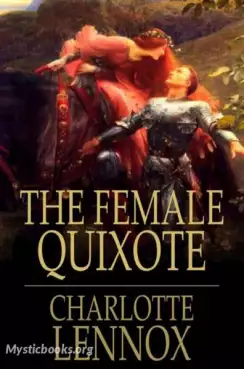
The Female Quixote Vol. 1
The Female Quixote; or, The Adventures of Arabella is a novel written by Charlotte Lennox imitating and parodying the ideas of Miguel de Cervantes' Don Quixote. Published in 1752, two years after she wrote her first novel, The Life of Harriot Stuart,...
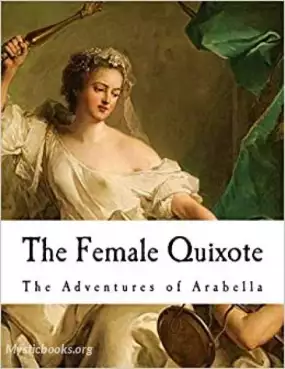
The Female Quixote Vol. 2
The Female Quixote; or, The Adventures of Arabella is a novel written by Charlotte Lennox imitating and parodying the ideas of Miguel de Cervantes' Don Quixote. Published in 1752, two years after she wrote her first novel, The Life of Harriot Stuart,...
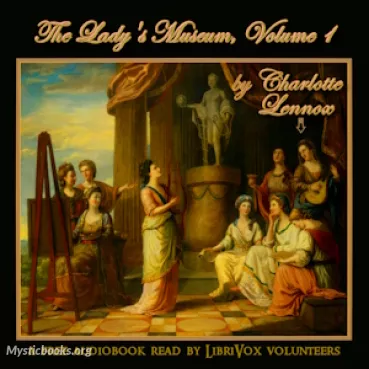
The Lady's Museum, Volume 1
Step into the world of 18th-century England, where the genteel veneer of society hides a myriad of passions and complexities. In "The Lady's Museum, Volume 1" by Charlotte Lennox, societal norms and individual desires collide in a narrative that imme...

Henrietta Volume 1
Henrietta, a spirited and independent young woman, defies her aunt's attempts to arrange a suitable marriage for her. Yearning for a life beyond societal expectations, she embarks on a daring escape, venturing into the unknown. Her journey leads her...

Life of Harriot Stuart
The Life of Harriot Stuart is a complex and problematic exploration of self-creation in the 18th century. The novel follows the story of Harriot Stuart, a young woman who uses language to manipulate her male admirers and control her own identity. Thr...
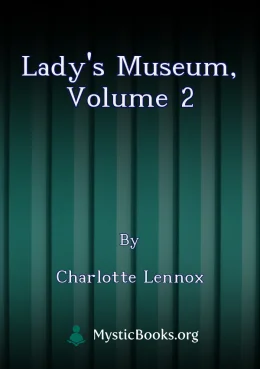
Lady's Museum, Volume 2
The Lady's Museum, published in 11 issues between 1760 and 1761, was a periodical designed to educate and entertain female readers. Edited by Charlotte Lennox, it presented a diverse range of content, from scientific discoveries and philosophical tre...